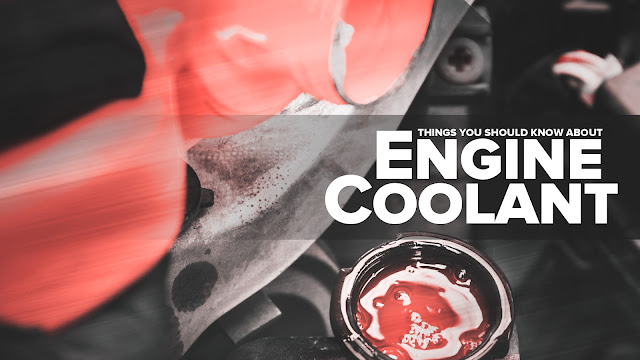Your car runs on six types of fluid that does different jobs in order to keep your car in good running condition. But like any fluid, they’re not permanently there as they need to be topped up and replaced every now and then because otherwise they will deteriorate and have opposite effect to your car.
One of those fluids is the coolant which allows your engine to maintain safe temperature while running. So you can’t deny how important this fluid is for your car. Learn more about engine coolant and keep your car and your wallet free from avoidable car repair expenses.
When To Check On Your Coolant
If you follow your preventive maintenance service schedule, then you’re most likely up to date when it comes to your coolant checkup. But you should also take your driving distance every time you drive into consideration. So to be safe, it’s best to do it once every two weeks.
That may sound too often since coolants typically lasts longer than that, but you’d be wise to check still to see if there’s a leak. This is often the reason why your car overheat and your fuel economy gets affected if you run on little to no coolant too.
When To Change Your Coolant
So now you know how often you should be checking your coolant, you’re probably wondering how to figure out if it’s time to change your coolant. Well, if you have a modern car, it is usually advised to flush it out every 10 years or 160, 000 km. Check your user manual to confirm it because it may still depend on the vehicle you drive, the brand or type of coolant you use, and the distance you cover over a period of time. It’s important that you adhere to the suggested coolant change interval as it may cause your car to overheat at a maximum level if you don’t.
What Happens When You Miss Changing It
Coolant becomes acidic when left in the engine for a very long time. When your coolant becomes acidic, it would no longer keep rust from attacking your engine. Rust on the insides of your engine spells out disaster, as you could face more expensive services just to save your engine from dying—for good. However, it isn’t just your engine that’s at stake. Coolant also keeps your radiators from corrosion so you’re also putting the components of your cooling system at risk.
Signs That You Need To Change Your Coolant
For whatever reason that you fail to change your coolant or haven’t checked on it for a while, you may start noticing problems in your car. Pay attention to these signs to hopefully get it fixed right away and reverse the damage early on.
Your Car Overheats Quickly
Your car’s cooling system is what’s keeping it from overheating. So when the cooling system’s running condition becomes less ideal due to leaks then your car run the risk of overheating. This is why it’s always advised to fix even the smallest leak as soon as possible in order to avoid overheating and possibly an expensive car repair.
There’s Leak On The Floor
The coolant, as the name suggests, helps the radiator to cool down. However, when there’s a leak or crack in the radiator, you’ll see coolant leak on the floor underneath your car, since the coolant flows through the radiator.
You Can Smell A Sweet Scent While Your Car Is Running
While it may smell nice, this could actually mean engine coolant is leaking from a component related to car’s cooling system. Just remember not to touch the radiator cup when it’s hot in attempt to check what’s wrong.
Coolant Level Depletes
If the level is below the minimum line, top it up to the maximum line and monitor on a daily basis. If you have to top up the coolant reservoir each time it is checked, this could indicate a leak. If it seems that you vehicle is always low on coolant then it’s reasonable to suspect that your radiator have gone bad or at least failing.
Think car maintenance and car servicing are an unnecessary expenditure? Think again! Because by keeping your car in good running condition means not needing to buy a new ride after every couple of years, not spending money on major car repairs due to malfunction, and more importantly avoiding hospital and damage expenses in case of an accident because of malfunction too.
The more you keep its maintenance up-to-date the more your car’s condition is restored therefore prolonging its lifespan. With that, you’ll be able to enjoy your car longer than it would if you just let minor damages turn into unrepairable ones due to neglect.
ALSO READ:
ALSO READ:


Walang komento:
Mag-post ng isang Komento